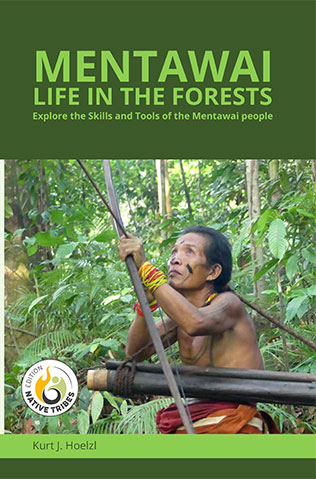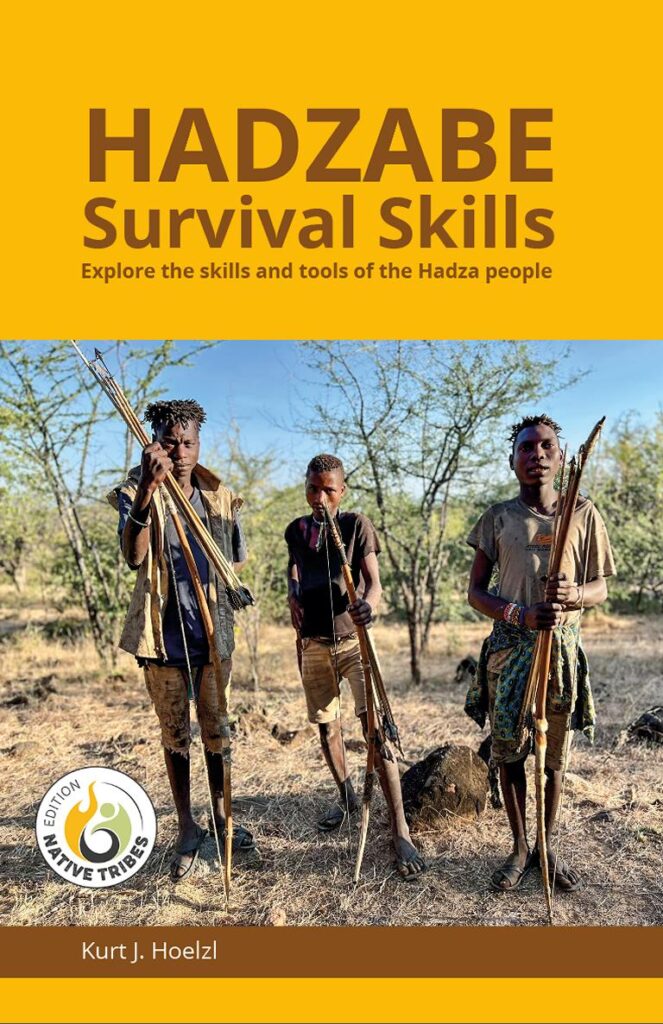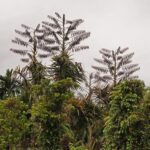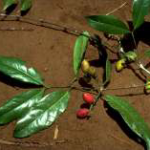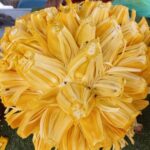Cassava (Manihot utilissima) leaves and Fiddlehead ferns are the most essential vegetables for the Mentawai people living in the forests of Siberut Island. Both vegetables were discussed in separate articles on this webpage. Details about Cassava leaves can be found at the provided link, and about Fiddlehead ferns (Diplazium esculentum) and (Diplazium polypodioides) here. Besides these two vegetables, Torch ginger flowers (Etlingera elatior), which are used both as a vegetable and a spice, were discussed in the linked article.
However, these are not the only vegetables eaten by the remote Mentawais; a wide variety of other vegetables are available. Some of them grow wild, but some are also semi- or fully cultivated. In the following, we provide a brief overview of these species.
Before describing these species, the following harvesting times with temperature profile and precipitation on Siberut Island are presented.
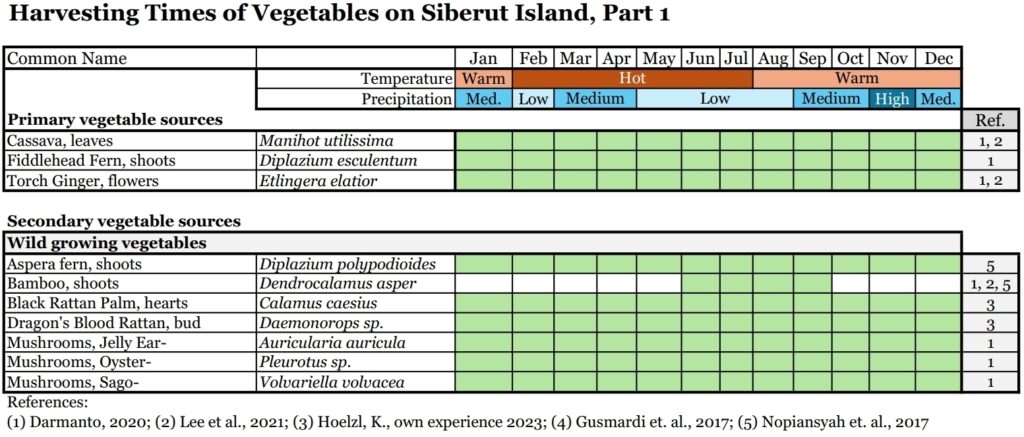
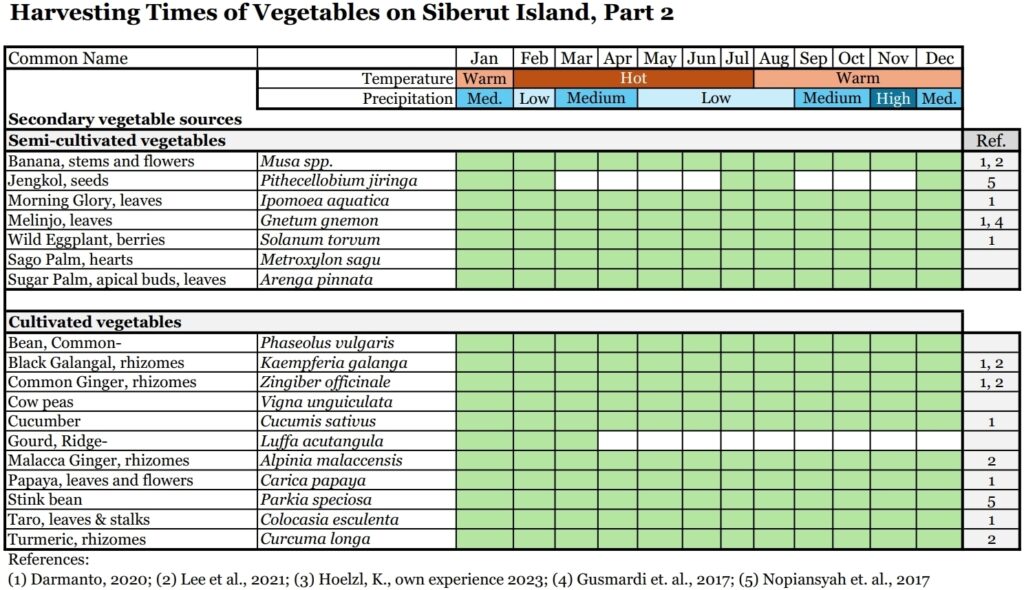
Wild-growing vegetables of Mentawai people
These vegetables are collected within an area in the forests, which is regarded as belonging to a particular Longhouse community.
Bamboo shoots
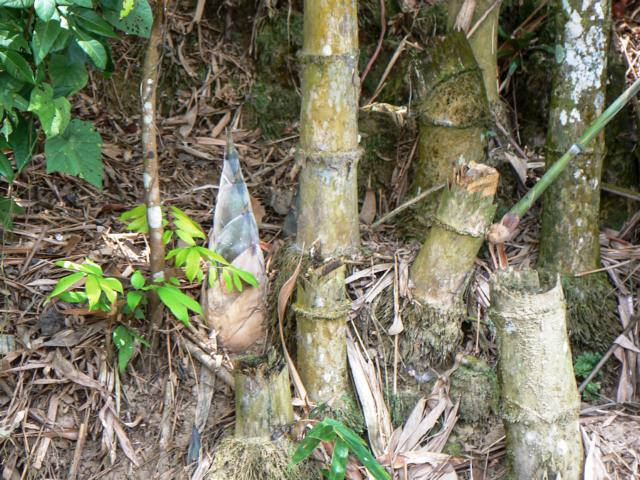
The shoots of ‘Sweet bamboo’ (Dendrocalamus asper) will be predominantly cut around the end of the dry season of the year. They are rich in potassium content and are a welcome change to other, more common, vegetable dishes.
agon’s blood rattan/Jernang (Daemonorops draco (Willd.) Blume) palms.
Edible Mushrooms
Edible mushrooms are relatively scarce in the rainforest. The thin leaves covering the clayey ground do not support an extensive growth of mushroom mycelium. Therefore, mushrooms are found only in areas with a steady supply of a staple nutrient, such as large tree trunks or termite nests.
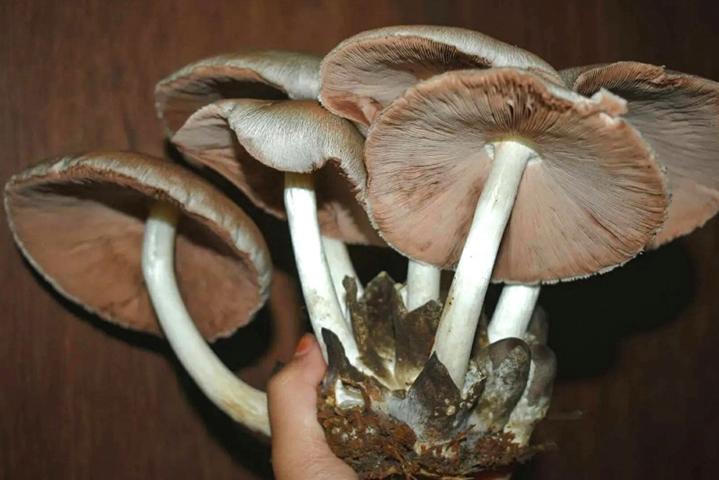
Sago mushrooms (Volvariella volvacea) thrive on decaying sago palm stems. They are the preferred mushroom to collect during and shortly after the rainy season.

Termite mushrooms grow from late December to late February. They are often found at field edges, especially above termite nests or in soil with high organic content.
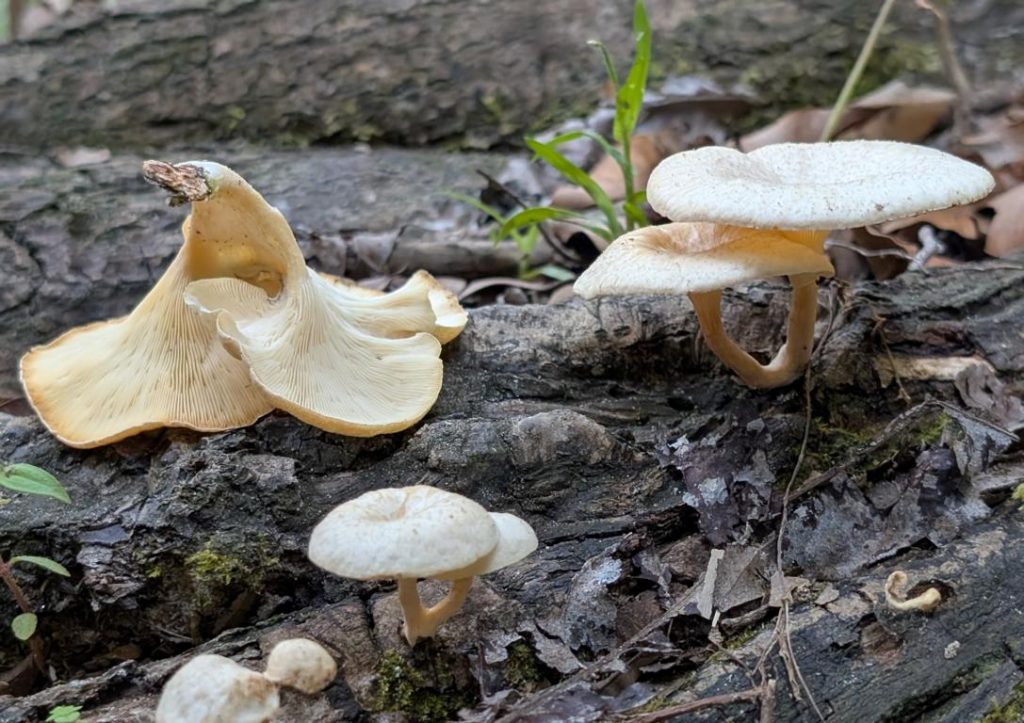
The Funnel woodcap, also known as the White-rot mushroom, is commonly found on dead wood. It is a distant relative of the oyster mushroom. Young species are white and palatable. Older species turn yellowish, become too tough and rigid to eat, and tasteless.

Wood ear mushrooms, or Jamur kuping hitam in Bahasa, are widely appreciated throughout Southeast Asia. By themselves, they lack any notable taste, but they add a pleasant, chewy texture to dishes while absorbing flavors from spices.
On the negative side, they contain a high amount of oxalates, which can increase the risk of developing kidney stones when overeaten.
Semi-cultivated vegetables of the Mentawai people.
These plants were initially planted and are now growing wild, requiring no special care.
Banana stems and flowers

The inner part of the banana (Musa spp.) stems is often used as pig food, due to their slightly bitter taste. When cooked, however, they taste pleasantly sweet and still keep a crunchy bite.
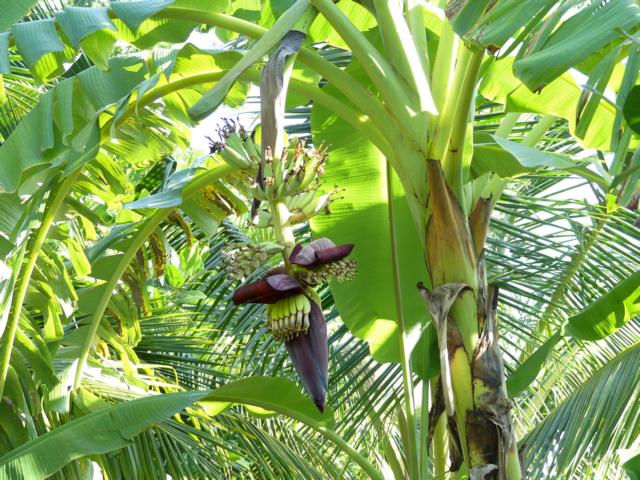
The banana flowers also taste slightly bitter and are traditionally eaten raw as a salad. Like many other vegetables, they are available year-round. Moreover, although low in calories and fat, they are a good source of minerals.
Jengkol seeds
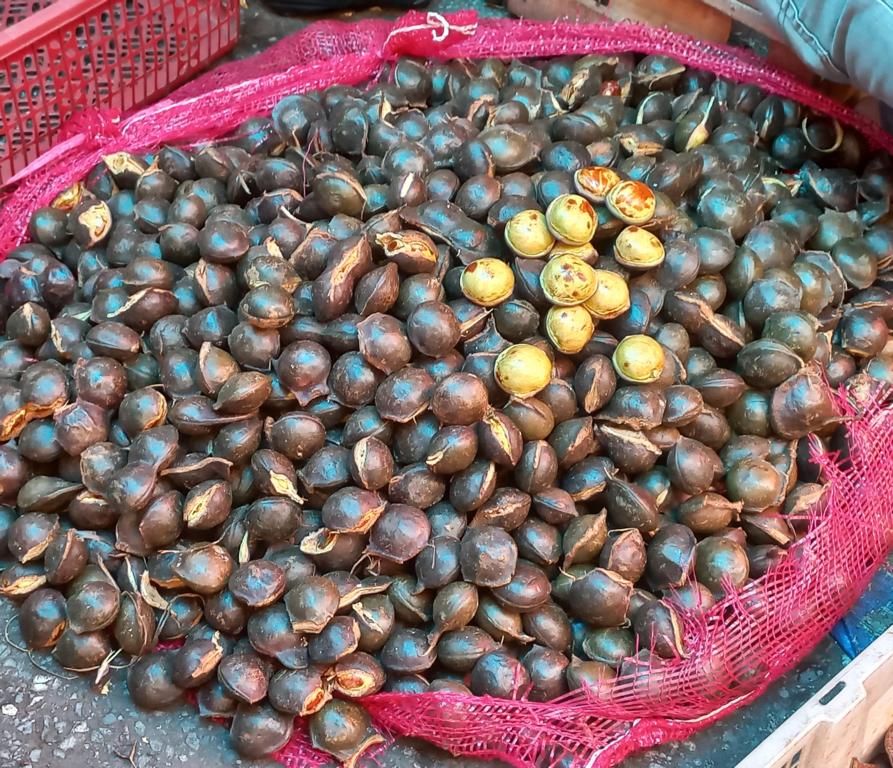
Jengkol (Pithecellobium jiringa) trees are grown in the agroforests from seeds. A mature tree will produce between 1,000 and 4,000 seeds per year, which can be harvested in two periods annually. The seed is used as a side dish, like a vegetable. It has a low calorie content, but is rich in vitamins A and C. The smell of the cooked seed is slightly ammoniacal, so it is best to cook it in a curry with lots of spices.
Morning Glory leaves
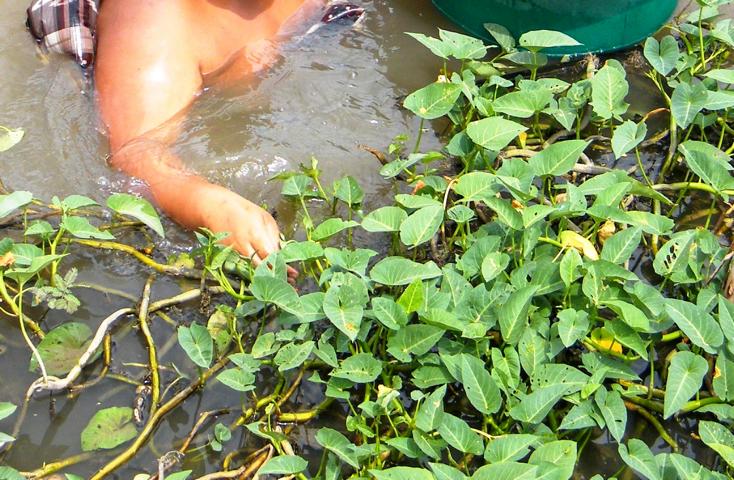
Morning Glory (Ipomoea aquatica) – in Asia mainly known as Kangkung – grows profusely and very fast in all types of slow-moving water bodies in the region. It is a favorite side dish in the villages. According to French (2024), 100 grams of boiled leaves contain 520 micrograms of vitamin A, which is a substantial amount.
Melinjo leaves

The Melinjo (Gnetum gnemon) tree is a very versatile plant. The seeds within the fruits can be eaten, and the bark is used for producing delicate strings for nets, bow strings, and other applications. Additionally, the leaves are used as a vegetable.
Wild eggplant berries
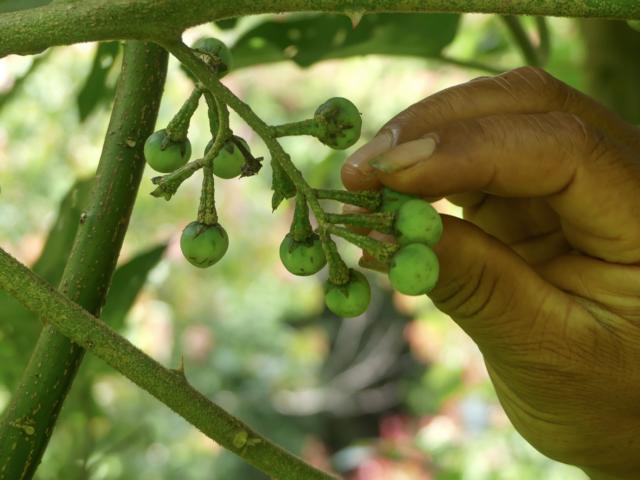
The berries of this eggplant are often bitter but are eaten throughout Southeast Asia. Most famous is the Thai dish Kaeng Khiao Wan, which, directly translated, means ‘Curry, green and sweet’.
Sago- (Metroxylon sagu) and Sugar palm (Arenga pinnata) hearts
These are predominantly composed of carbohydrates, with minimal amounts of protein, fat, vitamins, and minerals. This sets them apart from the other vegetables. They are not collected by themselves but are harvested from every freshly felled sago trunk as a side product.
Cultivated vegetables of the Mentawai people.
This type of vegetable is tended regularly by its owners.
Taro leaves and stalks
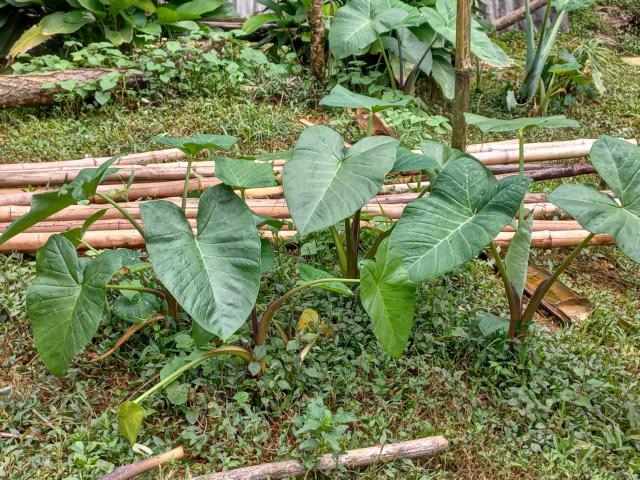
As an additional product to Taro (Colocasia esculenta) corms, young Taro leaves and stalks can be used as a vegetable. They are high in vitamins A and C, as well as potassium. Taro and its uses with the Mentawai people were already discussed in another article on this website.
Papaya leaves and flowers
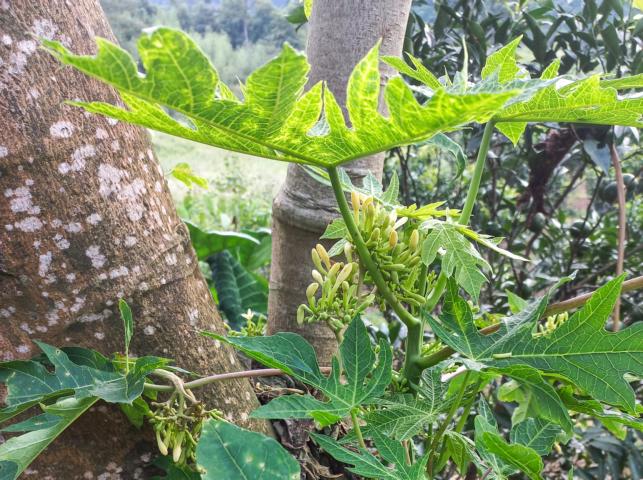
Young papaya (Carica papaya) leaves and female flowers are a valuable side dish, as they are exceptionally high in calcium content. Papayas contain the enzyme papain, which is a strong meat tenderizer; however, the Mentawai people do not use it in this manner. Again, according to French (2024), 100 g of the edible portion of a Papaya leaf typically contains: protein (8 %), vitamin C (140 mg), iron (0,77 mg), and calcium (1.080 mg).
Gourds and cucumbers
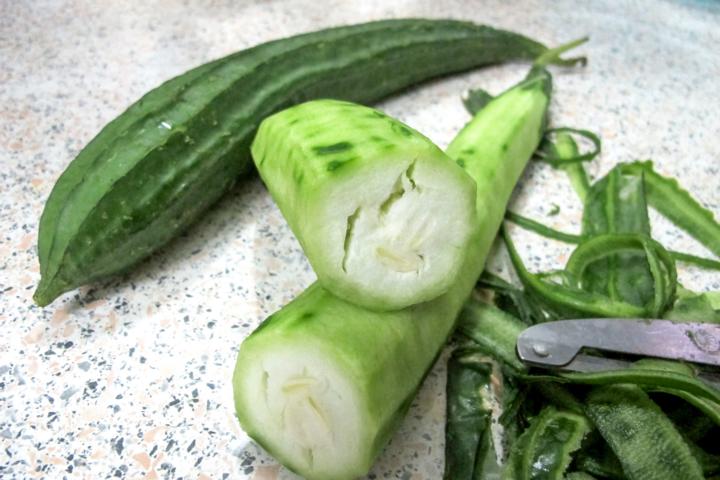
The immature fruit of the Angled Luffa Gourd (Luffa acutangula) is cooked and eaten as a vegetable, and the roasted seeds are eaten as a snack. Furthermore, various other cucumber species (Cucumis sativus) are cultivated at the fringes of the villages.
Ginger and Galangal rhizomes
Common ginger (Zingiber officinale), Malacca ginger (Alpinia malaccensis), and Black Galangal (Kaempferia galanga) rhizomes are used as spices. Besides their olfactory qualities, they are also rich in carbohydrates and potassium.
Turmeric rhizomes
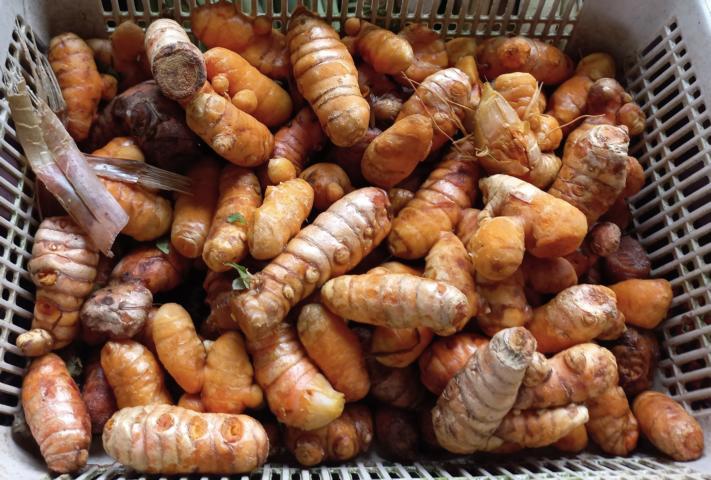
These sago worm-like rhizomes are not only a welcome spice but also used in dried and powdered form as an insecticide. They are incredibly high in iron and potassium minerals.
Besides the vegetables presented, cowpeas (Vigna unguiculata), common beans (Phaseolus vulgaris), and stink beans (Parkia speciosa ) are also cultivated in Mentawai villages, but not in the agroforests of the Mentawai people.
Lessons learned about other vegetable side dishes:
- Bamboo shoots, banana stems and flowers, and taro leaves and stalks are all essential side dishes.
- Papaya leaves and flowers, morning glory leaves, eggplant berries, peas and beans, and gourds and cucumbers are also available from the agroforests.
- The growing buds of various palm species are eagerly sought after, as they all taste pleasantly sweet.
- Ginger and turmeric rhizomes add a spicy flavor to meals.
- Edible mushrooms are special food items that are not regularly found.
.

